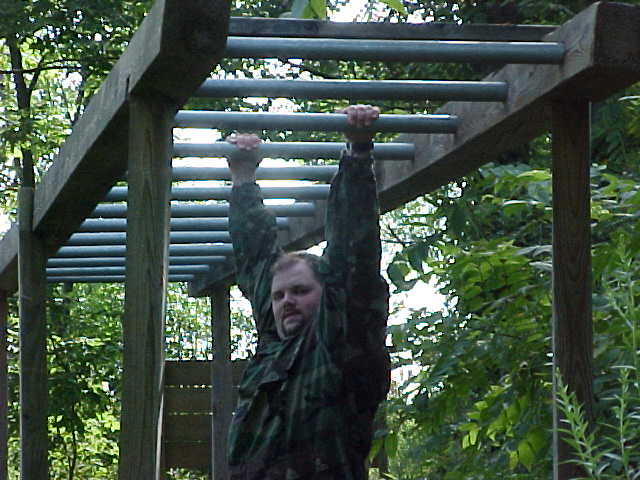Special Response Team


The Corrections Center began researching the need and feasibility of an Emergency Response Team (ERT) in 1993 and 1994. The research started the policy and procedure development. We began reviewing other facilities emergency response team policies to fit our own needs. The type of equipment that would be needed to outfit the team was determined once the policy and guidelines were established. The equipment was directly related to in-facility situations and emergencies, e.g., cell entries, fights, group disturbances and riots. The equipment consisted of elbow and kneepads, helmets, bite guards, gloves and black utilities.
A physical fitness standard was established to determine which staff would be allowed on the team. The test consisted of a half mile run in less than four minutes, bench press one and a half times your own body weight, a maximum weight leg press, forty sit-ups in one minute, three minute step test, stretch test and a vitals check by medical personnel.

Additional requirements included you had to have at least one year of service, dependable attendance, no discipline and live approximately 30 minutes from the Corrections Center.
In February 1995 the Corrections Center had its first ERT formal meeting and training. The team had approximately seven members. The training for the year consisted mainly of cell entry, techniques using shields, batons and electronic restraining devices, responding to various emergencies in the facility, maximum security moves and use of force continuum training.
The members of the team were sent to be instructors in the use of the ASP extendable baton, fire arms re-certification instructor, less lethal munitions (twelve gauge and 37mm), chemical munitions, distraction devices, self defense, electronic restraining devices (hand held, shield, react belt), service and riot batons and rappelling.

The years that followed were filled with change and growth. The team’s name was changed to the Special Response Team (SRT). The number of members grew and averages twelve to thirteen members. The team was split into two teams of six or seven members. Each team had its own chemical and less lethal instructor, assistant team leader, team leader and commander. All of the members were equally trained and certified to use all the resources at our disposal.
The team also trained in tactical rappelling, room clearing, hostage situations, civil disturbances, unit disturbances, escapes, tactical pistol and shotgun, hand and arm signals and radio communication.
We have traveled to Camp Perry and Camp Palmer for various types of team building skills. We participated in a tactical team competition in Jackson County, Ohio where we did quite well. The SRT trained with the Lima Correctional Facilities Special Response Team in room clearing and apprehension of escaped prisoners as well. The interagency training was helpful in gauging our SRT’s progress.

Changing times and training came the need for updated equipment. The purchasing of tactical vests, ballistic vests, camouflage utilities, rain gear, tactical equipment bags, flashlights, simulation training rounds and weapons, rappelling equipment, night vision binoculars, binoculars, entry tools and a redman suit.
We changed the physical fitness test. The new test consisted of a half mile run in less than four minutes, forty push ups in one minute, forty sit ups in one minute, three pull ups, stretch test, three minute step test and a vitals check by the medical staff.

The SRT has been called out several times with success to include in conjunction with law enforcement agencies at two KKK rallies in Northwest Ohio. The CCNO team was most trained in crowd control and the use of dogs so CCNO SRT members were used as recovery teams to assist in arresting disruptive individuals. Our SRT assisted transportation officers with violent misbehaving inmates that needed removed from the bus along a busy highway. The SRT secured the area during a prisoner transport vehicle accident and provided security for transportation of high-risk inmates to the hospital. Conducted numerous facility lockdowns and shakedowns due to contraband and/or high tension. The SRT has a sobering affect on disruptive inmates. The trained members are utilized as first responders when serious incidents and uses of force occur on shift.

 419·428·3800
419·428·3800 419·428·2119
419·428·2119